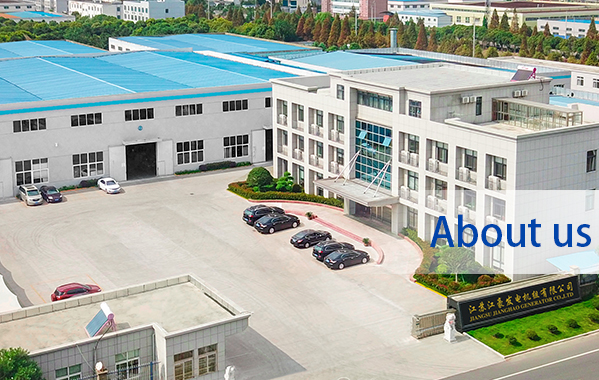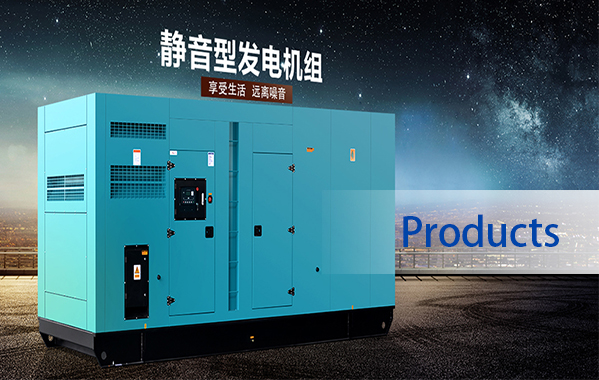The working principle of the synchronous generator regulation and maintenance of diesel generator sets is commonly used in standby power due to its combustion in diesel engines, diesel-powered, driven generator issue of electricity with the electricity of the same nature, so, after a power failure, need back-up supply a few hours or more occasions. From the cost of the work environment requirements, with a nonlinear load capacity considerations, the use of diesel generator sets use a lot of high-capacity battery, time-lapse UPS tend to have certain advantages. Diesel generator sets, but, after a mains failure, about ten seconds to a steady power, which is great as UPS uninterruptible power supply characteristics. Therefore, diesel generator sets and UPS whichever their respective strengths to form a complete and reliable power system to ensure uninterrupted power supply of critical equipment.
The diesel generator set is generally used synchronous generator (also commonly known as the electric ball) and the diesel engine's rotating mechanical energy to electrical energy. Variety of electrical equipment to rely on it sends power requirements are high, so the performance of the synchronous generator.
The working principle of a synchronous generator
The synchronous generator is manufactured in accordance with the principle of electromagnetic induction. A major component in Figure 1. Modern alternators are usually composed of two parts coil; In order to improve the strength of the magnetic field, part of the coil around the performance of a magnetic piece of metal quartet built cylindrical inner wall of the groove, this cylinder is fixed to the seat called stator. Within the stator coil output EMF and induced current, and so also known as the armature. The grooves of the cylinder a strong permeability metal piece Diecheng the generator the other part of the coil around the stator cylinder, called a rotor. An axis through the rotor hub and fastening together the axis constitutes bearings support both ends and the base unit. Small and uniform gap between the rotor and the stator wall and the flexibility to rotate. This is called a brushless synchronous generator of the rotating magnetic field structure.
Work, the rotor coil through the formation of a DC DC constant magnetic field, the rapid rotation of the rotor driven by diesel engines, constant magnetic field along with the rotation of the stator coil magnetic field lines cutting the induced electromotive force generator on the issue of electricity to
1 - the front cover; 2 - wind cover; 3 - bearing; 4 - stator; 5 - terminal box side panel; 6 - voltage regulator; 7 - adjustment bracket; - the top cover of the terminal box; - terminal box before and after the board; 10 - wiring board; 11 - wiring plate bracket; 12 - terminal box side panel; 13 - hanging climbing; 14 - bearing cap; 15 - into the wind cover; 16 - end caps; 17 - exciter stator; 18 - exciter stator mounting bolts; 19 - bearing; 20 - rotating rectifier; 21 - exciter armature; 22 - Grounding plate; 23 - rotor; 24 - fan; 25 - permanent magnet machine chassis; 26 - permanent magnet machine shaft; 27 32 - permanent magnet machines cover 28 - permanent magnet stator - rotor permanent magnet machine;; 29 - permanent magnet stator mounting bolts; 30 - permanent magnet rotor mounting bolts; 31 - washers;
Figure 1 two-bearing alternator cutaway view
Rotors and a constant magnetic field is diesel driven by rapid rotation, small and uniform gap between the rotor and stator, a rotating magnetic field, known as the rotor magnetic field or the magnetic field. Normal work of the generator stator coil armature are connected to the load induced electromotive force generated in the stator coil cuts the magnetic field lines formed by the load induced current, this current flows through the stator coil will produce a magnetic field in the gap, called stator magnetic field or the armature field. So small and uniform gap between the rotor, stator with the rotor field and stator field, these two magnetic fields interact to form a synthetic magnetic field. The generator is the electricity cut by the magnetic field lines of the magnetic field of the stator coil. As the stator magnetic field caused by the rotor magnetic field, and they always keep one after and at the same speed synchronization relationship, so called generators for synchronous generator. The synchronous generator has many advantages in the mechanical structure and electrical performance.
2 regulation of synchronous generator
Synchronous generator is allowed within the scope of its rated load with a variety of electrical load. The input characteristics of these loads will directly affect the output voltage of the generator; when the load is purely resistive, because of the synchronous generator stator terminal voltage - the armature terminal voltage and load current is in phase, so that the first half of the rotor magnetic field been weakened by the stator magnetic field, and then half of the stator magnetic field to strengthen the resultant magnetic field the average of the same week, the generator output voltage constant. Load showing as a pure electric sensibility, due to the load current lags behind the armature terminal voltage of 90 ° makes the stator magnetic field to weaken the rotor magnetic field, the resultant magnetic field decreased, resulting in the generator output voltage drops. If the load is pure capacitive load current will be ahead of the armature terminal voltage, 90 °, so that the stator magnetic field to strengthen the rotor magnetic field, the resultant magnetic field increases, the generator output voltage rises. Visible; the resultant magnetic field is an important factor to make changes in the generator performance. Play a major role in the resultant magnetic field of the rotor magnetic field, magnetic field, Therefore, the regulation of the rotor magnetic field can adjust the output voltage of the synchronous generator to improve with a load capacity to achieve the purpose to stabilize the generator output voltage within the rated load .
(A) synchronous generator rotor excitation
The so-called excitation to the synchronous generator rotor to provide direct current to produce a dc magnetic field. The coil within the synchronous generator rotor groove by a special device called the exciter its supply formed to direct current dc magnetic field. Early generators separate exciter rotor coil DC, the system is large and complex. As technology advances, modern synchronous generator generator and exciter are assembled together to form a complete generator.
The exciter is actually a small generator, it works with the synchronous generator. The difference is that the role played by the stator coil and rotor coil synchronous generator - main generator is just the opposite; fixed next to the main generator stator exciter stator coils through the formation of a dc magnetic field, and installed in a DC The main generator rotor shaft of the rotor of the exciter coil output electromotive force of the armature. Small and uniform gap is maintained between the exciter rotor and the stator wall. This is also known as a brushless synchronous generator of the rotating armature structure. Installed next to the main generator stator, the exciter stator coil DC, is obtained in part by the main generator stator coil, the armature output voltage of the rectifier. Installed with the main generator rotor coaxial exciter rotor coil in the magnetic field generated by the stator coil rotation, cutting the magnetic field lines generated by the induced electromotive force, by coaxial rectifier is installed next to it is rotating rectifier into a DC current input to the main generator rotor coil to produce a DC rotor field. So as to achieve the requirements of the main generator rotor coil excitation.






